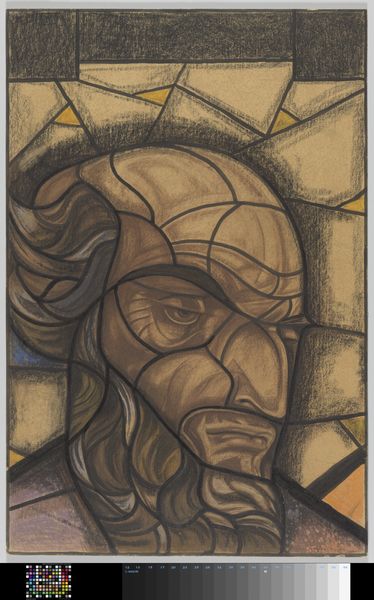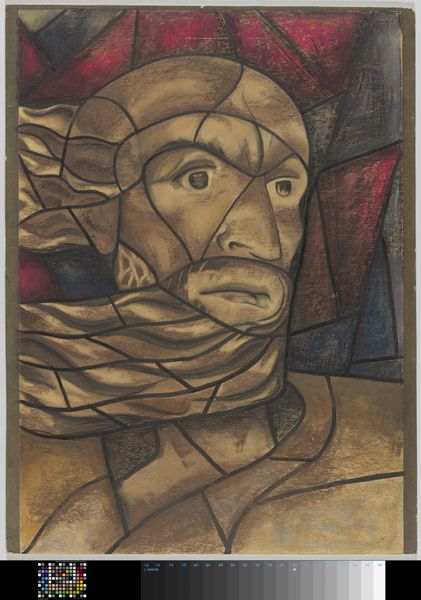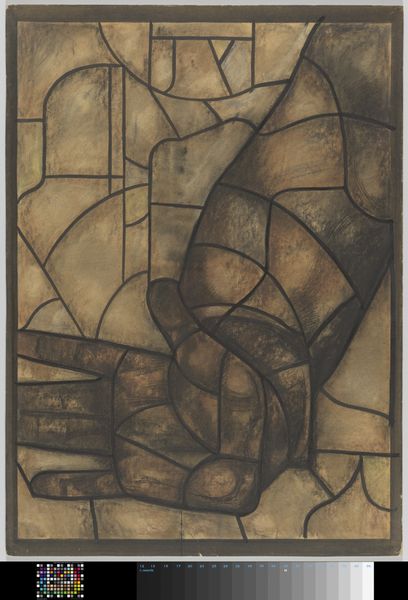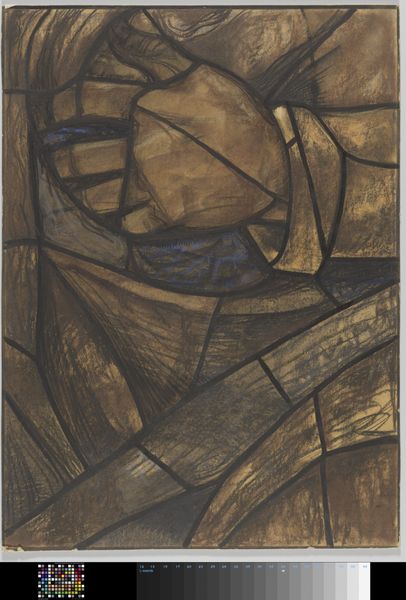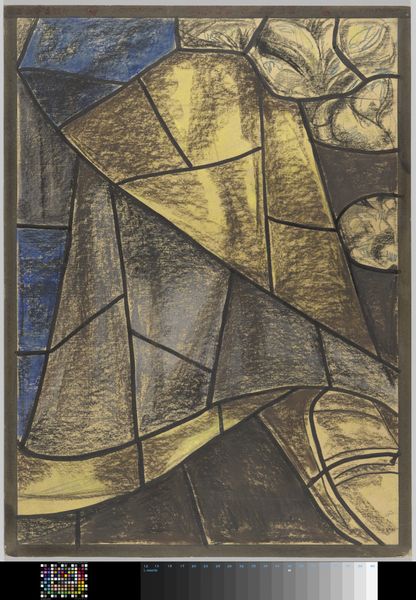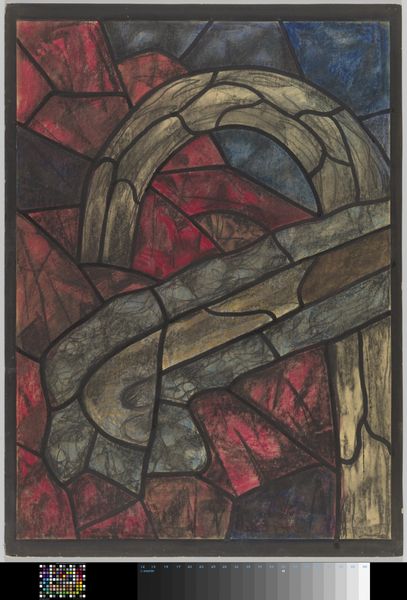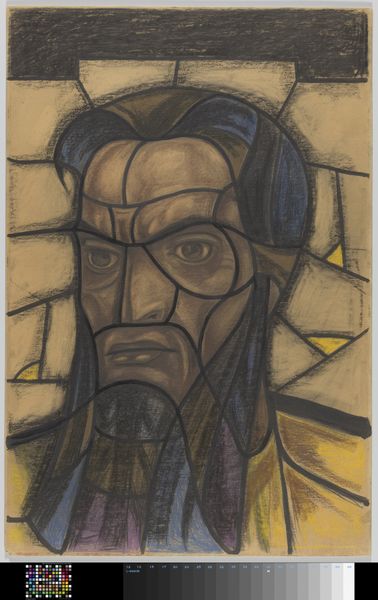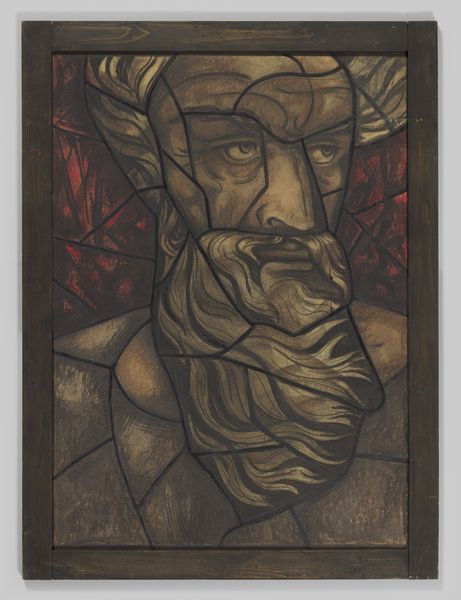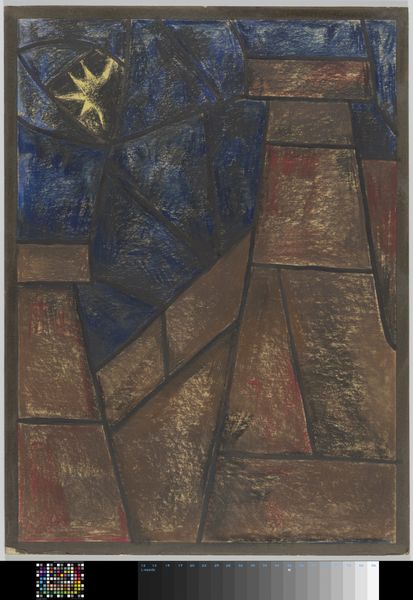
Ontwerp voor raam in het Zuidertransept van de Dom te Utrecht c. 1878 - 1938
0:00
0:00
drawing, glass, pencil
#
portrait
#
drawing
#
art-nouveau
#
glass
#
geometric
#
pencil
#
portrait art
Dimensions: height 1115 mm, width 780 mm, height 1090 mm, width 730 mm
Copyright: Rijks Museum: Open Domain
Richard Nicolaüs Roland Holst created this design for a stained-glass window using chalk and charcoal. Notice how the composition is dominated by the strong, sculptural head rendered in earth tones, sharply divided by thick, dark lines. These lines don’t just define form, they fracture it, giving a nod to the geometric abstraction of the era. Holst plays with structure here, perhaps as a symbolic statement about faith and modernity. The face is divided, almost architectural, yet the sensitive shading provides a sense of depth and emotional resonance. The surrounding geometric shapes contrast with the organic curves of the head. Consider how Holst’s design utilizes the semiotic power of stained glass, traditionally used to illuminate sacred narratives. By breaking down the image into graphic components, Holst invites a reinterpretation of spiritual themes, using the language of modernism to explore enduring human questions. The fracturing of form challenges stable interpretations, acknowledging art as a perpetually evolving field of inquiry.
Comments
No comments
Be the first to comment and join the conversation on the ultimate creative platform.
